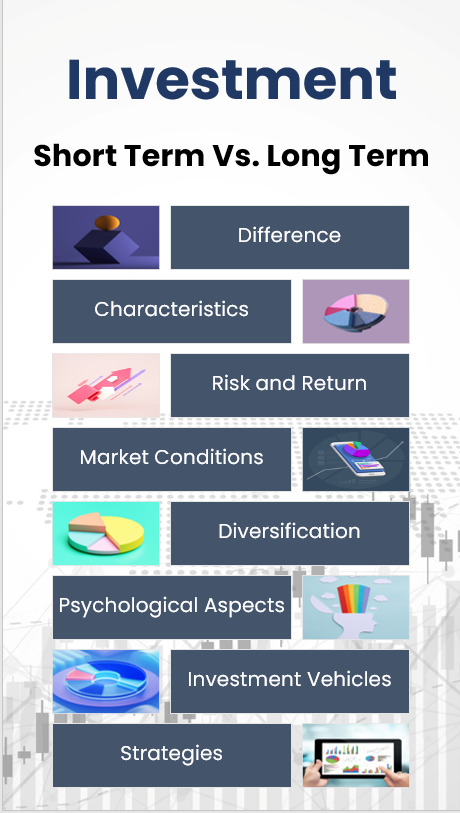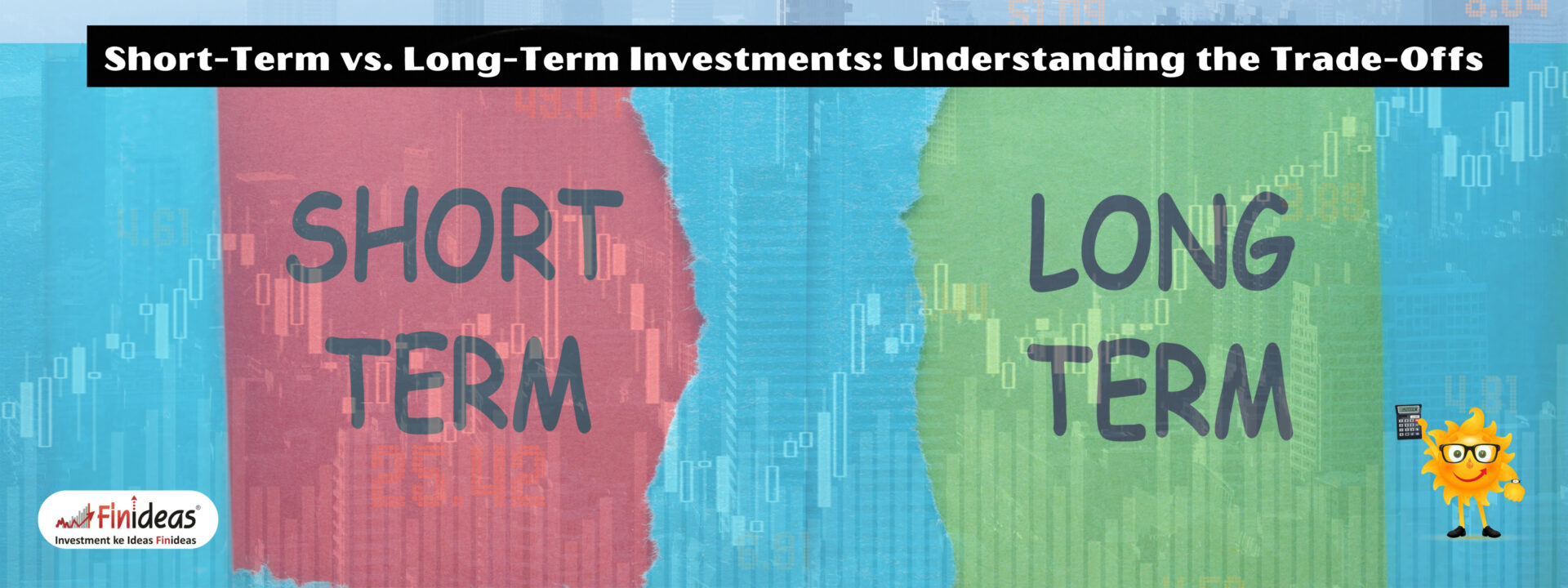Short-Term vs. Long-Term Investments: Understanding the Trade-Offs
Introduction:
Embarking on the complex journey of investments involves grappling with the pivotal element of time. Short-term investments, delivering swift returns within a year, stand in stark contrast to the extended timelines associated with long-term investment strategies. The crux of the matter lies in aligning your investment horizon with your distinct financial goals.
Characteristics:
Short-Term Investments:
- Dwell in stable, low-risk assets such as money market funds.
- Boast high liquidity, modest returns, and a primary focus on capital preservation.
Long-Term Investments:
- Venture into dynamic realms, including stocks and real estate.
- Hold the promise of higher returns, accompanied by increased volatility, emphasizing resilience and endurance.
Risk and Return:
- Short-term investments provide a lower risk profile but offer modest returns.
- Long-term investments present the potential for higher returns while exposing investors to greater volatility, requiring endurance.
Market Conditions:
- Short-term investments react swiftly to immediate market shifts and economic indicators.
- Long-term investments align with broader economic trends, acknowledging short-term market noise as part of a sustained growth trajectory.


- Short-term investors spread assets across different low-risk instruments for risk management.
- Long-term investors diversify portfolios across asset classes, sectors, and regions to balance risk and reward over an extended horizon.
- Diversification has a vital role to play in both types of investment, you must know more about Index Long Term Strategy to get a better idea.
Psychological Aspects:
- Short-term investors navigate emotional swings driven by immediate market movements.
- Long-term investors cultivate a measured approach, shifting focus from daily market noise to the overarching trajectory.
Market Timing:
- Short-term investors may be enticed by market timing but face challenges in consistent predictions.
- Long-term investors champion patience, focusing on time in the market rather than attempting to predict short-term fluctuations.
Investment Vehicles:
- Short-term investors gravitate toward instruments like Treasury bills, money market funds, and short-term bonds.
- Long-term investors deploy a broader array of tools such as stocks, mutual funds, ETFs, and real estate for a well-diversified, long-term portfolio.
Changing Strategies:
- Both short-term and long-term investors must adapt strategies to evolving circumstances.
- Short-term investors prioritize adaptability, while long-term investors are more likely to adhere to established strategies amid short-term fluctuations.
Conclusion: Making Informed Decisions:
In the intricate tapestry of investing, there exists no one-size-fits-all approach. The decision between short-term and long-term investments necessitates a delicate balance between the desire for immediate gains and the patience required for lasting wealth accumulation.
How do you approach the delicate balance between short-term gains and long-term growth in your investment strategy, and what factors guide your preferred investment horizon? Comment Down Below
Happy Investing!
This article is for education purpose only. Kindly consult with your financial advisor before doing any kind of investment.

